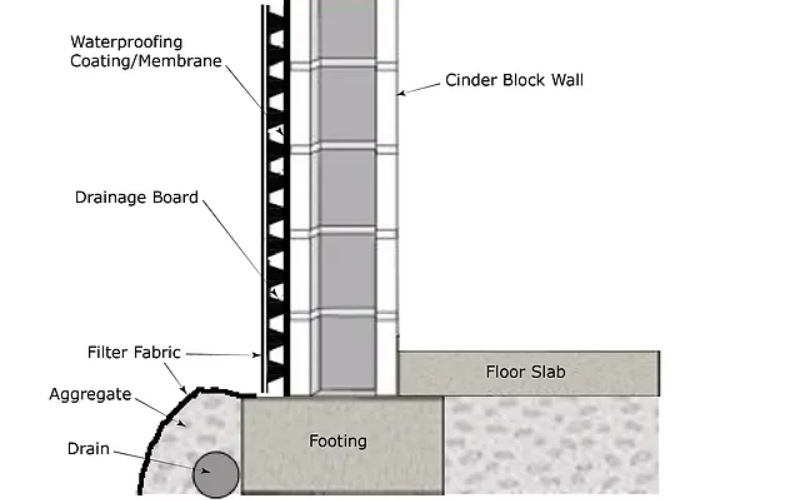PL:BECS has been designing, specifying, and supervising the installation of sub-grade wall drainage and waterproofing systems for over a quarter-century, including for various exceedingly-challenging situations, such as for highly-finished, moisture-sensitive spaces submerged well into the site water table and supported atop highly-dynamic, expansive soils.
Past designs have spanned the full spectrum of products and assemblies, including bentonite-clay, non-reinforced and reinforced cold and hot-applied fluid systems, self-adhered sheet membranes, composite sheet membranes, and bentonite-clay systems, integrated bentonite-polymer materials, concrete-activated sheet membranes, catalyzed fluid membrane systems, drainage mats, geotextile fabrics, bentonite and swelling-sealant joint water-stops, drainage piping, crack-resistant concrete mixes, epoxy and polyurethane injection grouts, related mastics, sealants, and other materials.
Effective Techniques for Sub-Grade Wall Waterproofing and Drainage
- Proper Site Preparation and Grading: Site preparation and grading are crucial to the efficient drainage of water from below-grade walls. The ground around the structure must be carefully graded so that water flows away from the building’s foundation. Water can be kept from collecting along the building’s exterior by channeling it away from the structure or into appropriate drainage systems.
- Installation of Drainage Systems: French drains or footing drains must be fitted for effective sub-grade wall drainage. By collecting and redirecting water away from the foundation, these devices reduce hydrostatic pressure and the likelihood of water penetration. Correct installation, which includes using high-quality materials and according to prescribed criteria, is crucial to the efficiency of the drainage systems.
- Waterproofing Techniques: Several methods of waterproofing are available for protecting sub-grade walls against water seepage. These options may involve the use of sheet membranes, liquid-applied membranes, or cementitious coatings to block water penetration. Foundation type, climate, and water exposure all play a role in determining the best approach to take. Expert waterproofers should be consulted to establish the optimal approach for any individual job.
Benefits of Sub-Grade Wall Drainage and Waterproofing
The following benefits result from proper sub-grade wall drainage and waterproofing:
- Prevention of Water Damage: Proper drainage and waterproofing can avoid water damage, such as mold growth, rotting of building materials, and structural collapse.
- Improved Indoor Air Quality: Drainage and waterproofing of sub-grade walls contribute to a better indoor environment by reducing the likelihood of mold and mildew growth and the associated health risks.
- Prolonging the Building’s Useful Life: Good drainage and waterproofing can lengthen the life of a building by minimizing the impact of water penetration and protecting against structural damage.
- Protection of property value: The value of a real estate can be preserved through adequate sub-grade wall drainage and waterproofing, as well-maintained and -protected buildings tend to retain their value over time
Conclusion
Sub-grade wall drainage and waterproofing are essential parts of any construction or building maintenance plan. By regulating water flow and reducing moisture infiltration, these measures protect structures from damage, maintain their integrity, and extend their longevity. A building’s worth, structural integrity, and occupants’ safety and comfort can all be preserved and protected with well-executed drainage and waterproofing measures.

